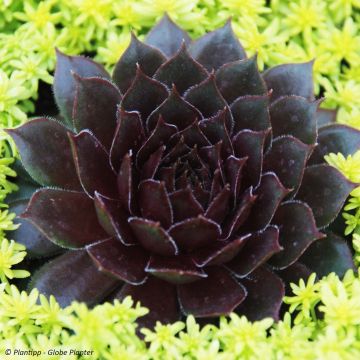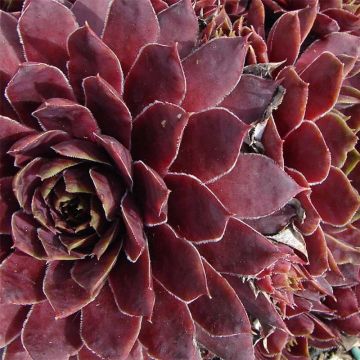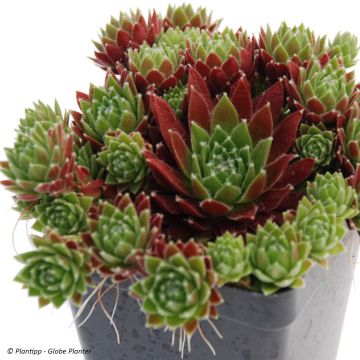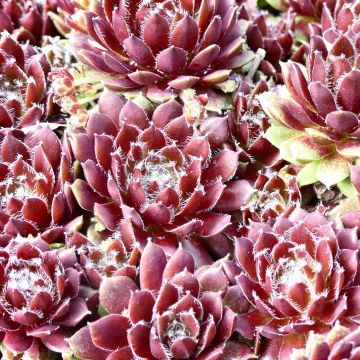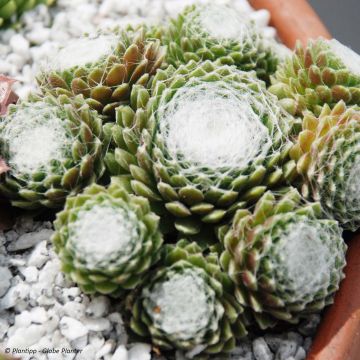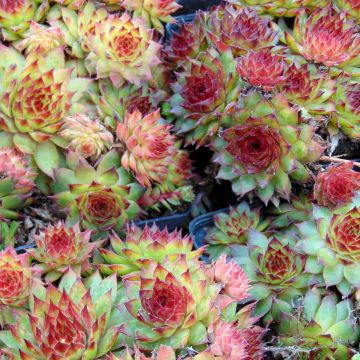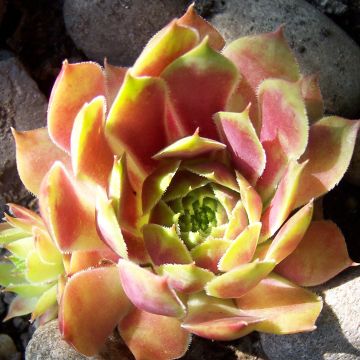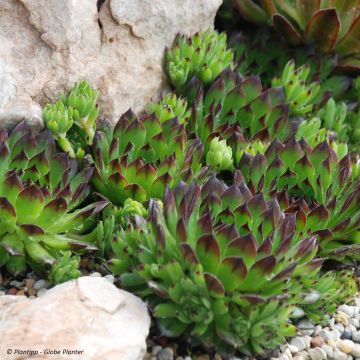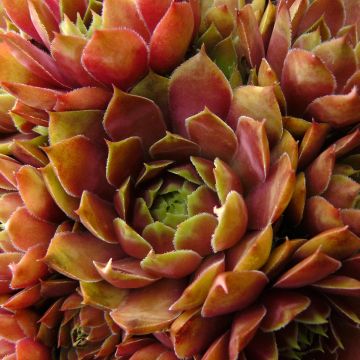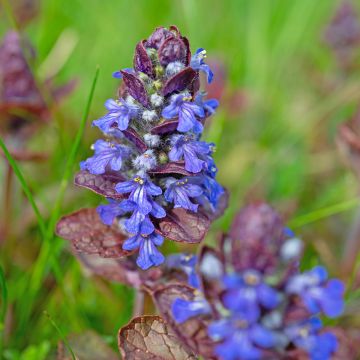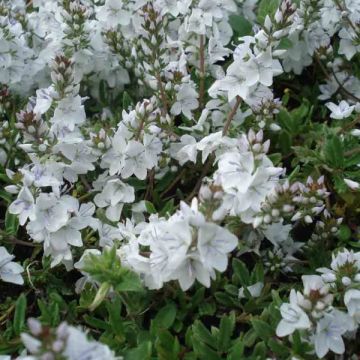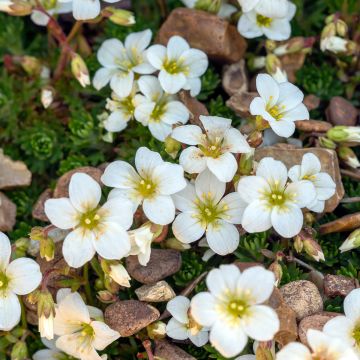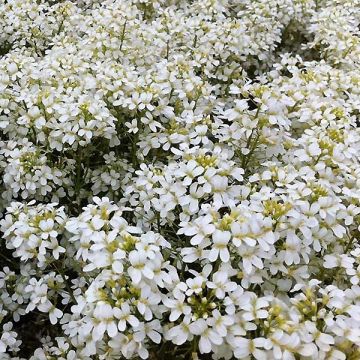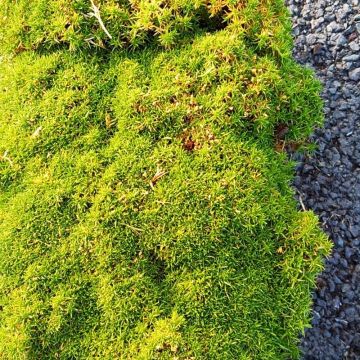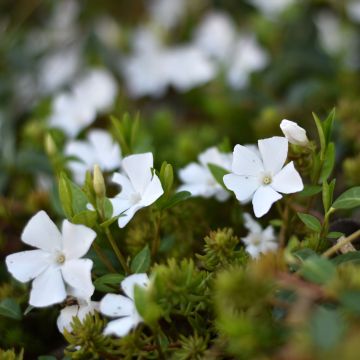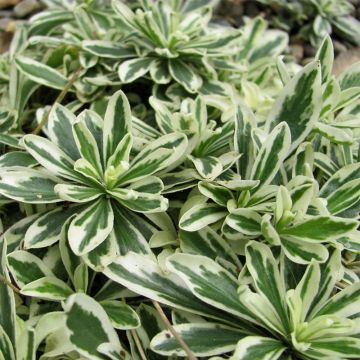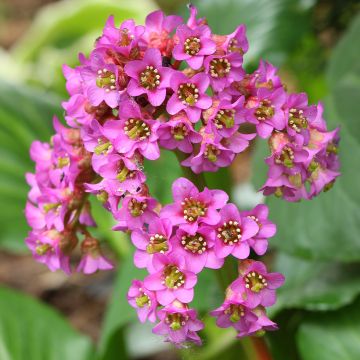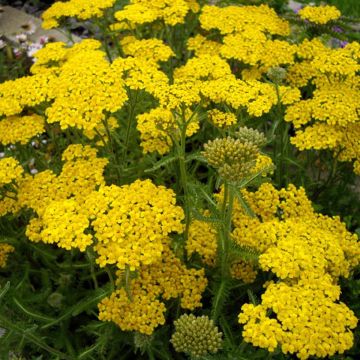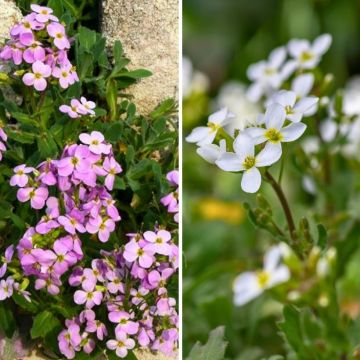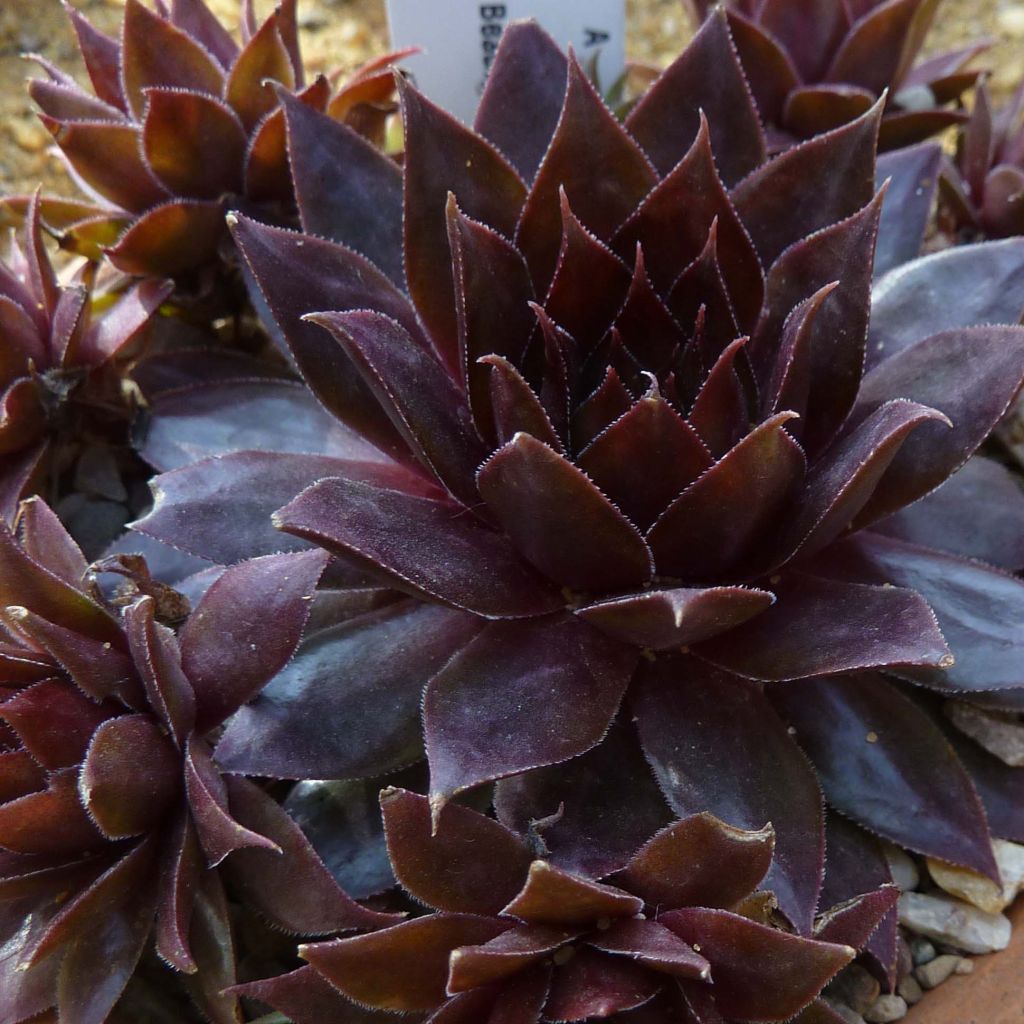

Sempervivum Dark Beauty - Joubarbe pourpre foncé
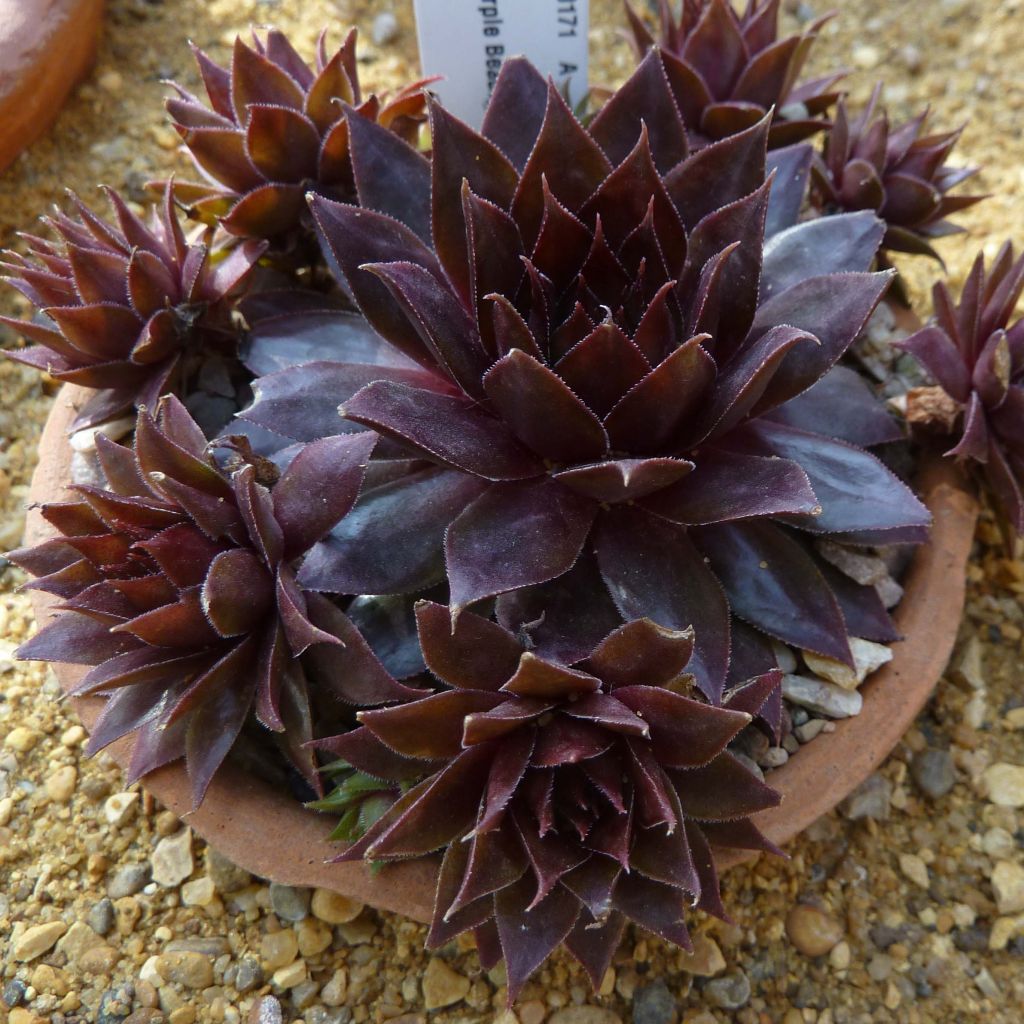

Sempervivum Dark Beauty - Joubarbe pourpre foncé
Sempervivum Dark Beauty
Sempervivum Dark Beauty
Houseleek, Hen and Chicks
This item cannot be shipped to the selected country
Delivery charge from €5.90
More information
Schedule delivery date,
and select date in basket
This plant carries a 12 months recovery warranty
More information
We guarantee the quality of our plants for a full growing cycle, and will replace at our expense any plant that fails to recover under normal climatic and planting conditions.
From €5.90 for pickup delivery and €6.90 for home delivery
Express home delivery from €8.90.
Does this plant fit my garden?
Set up your Plantfit profile →
Description
Sempervivum 'Dark Beauty' is an exceptional variety of houseleek with an intensely dark purple colour that lasts almost all year round. Its medium-sized rosettes bring depth and contrast to flower pots. It will form a striking mound when nestled in amongst stones. This succulent perennial is hardy and robust, but excess moisture in winter will kill it. Clinging with all its might to life, even when abandoned on a pile of rocks, houseleeks are endearing plants that always manages to conquer the gardener's heart.
Sempervivum is a succulent perennial plant in the Crassulaceae family. All Sempervivum grow spontaneously in rocky grasslands, on rocks and scree, in open and sunny situations, mainly in mountainous areas. Their vegetation persists all year round, even in winter.
The hybrid variety 'Dark Beauty' has thick and long roots that penetrate deeply into rock crevices, ensuring a good grip on the walls while drawing water from the depths. It quickly forms superb colonies of rosettes of different sizes, juxtaposed, reaching 8cm (3in) in diameter at maturity and not exceeding 10cm (4in) in height. Over time, this houseleek can form a mound or dense carpet with its stoloniferous stems, spreading over 30 to 40cm (12 to 16in) on the ground, perfectly following the contours of the terrain. Resembling a sea urchin, each rosette is composed of numerous pointed, fleshy, upright leaves, closely packed together and without petioles. In summer, the leaves will be green at their base, but the purple colour will quickly take over, intensifying and darkening over the seasons. In the heart of winter, the rosettes will be almost black purple. Flowering occurs sporadically on rosettes aged 2 or 3 years, which then disappear, having ensured the plant's perpetuity by producing numerous small rosettes on the periphery. The 12cm (5in) tall flower stalks develop from June to August, formed by thick stems that bear 1 to 5 star-shaped flowers with 8 to 10 pink-purple petals.
Sempervivum 'Dark Beauty', like all houseleeks, is a boon for alpine gardens, as well as in all rocky places where the soil is lean and thin. It thrives where few species can live, colonising abandoned areas. If your soil is poor, rather dry, stony, rocky, or even slightly chalky, you can still enjoy this hardy perennial (which resists temperatures below -15°C (5°F)). It does not require maintenance and promises to liven up any pile of stones, a low wall, or even a green roof. Houseleeks are unusual and easy-to-grow succulents. Their flowers and foliage in various shades foster the desire to collect them, multiply them, and compose astonishing displays in the most inhospitable places. They are magnificent in container gardens, especially in low terrine-type pots, and irreplaceable in borders, troughs, or rockeries, alongside wall bellflowers or Lewisia cotyledon. Choose companions with staggered blooming times (sedums, thymes), or play with contrasts by combining it with lighter foliage (Sedum oreganum, Delosperma' Wheels of Wonder', etc.) to create a colourful and cheerful rock garden.
Report an error about the product description
Sempervivum Dark Beauty in pictures
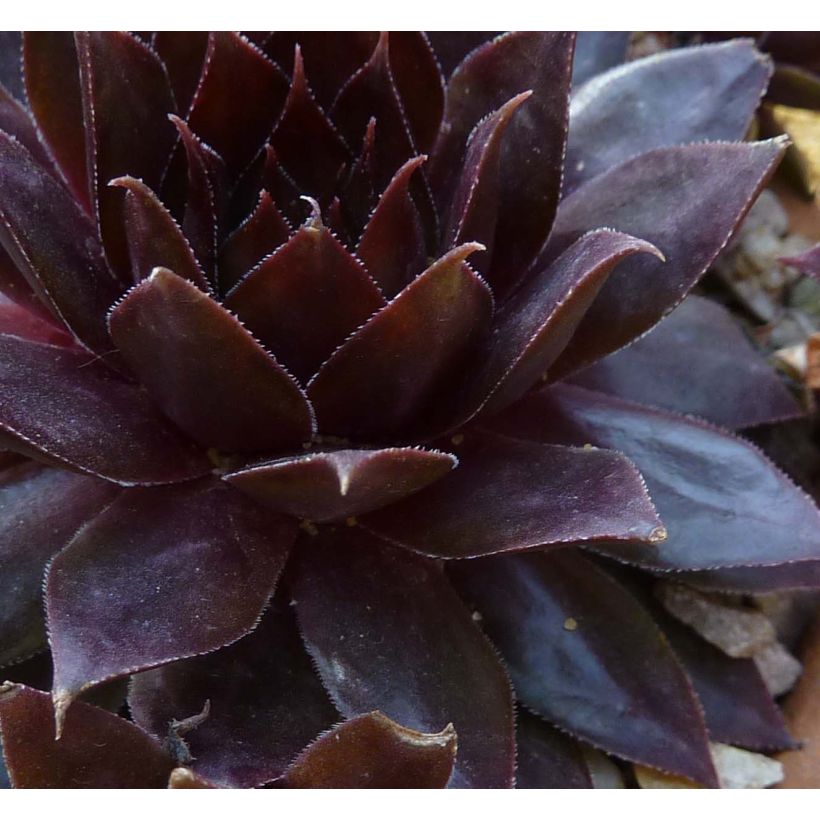

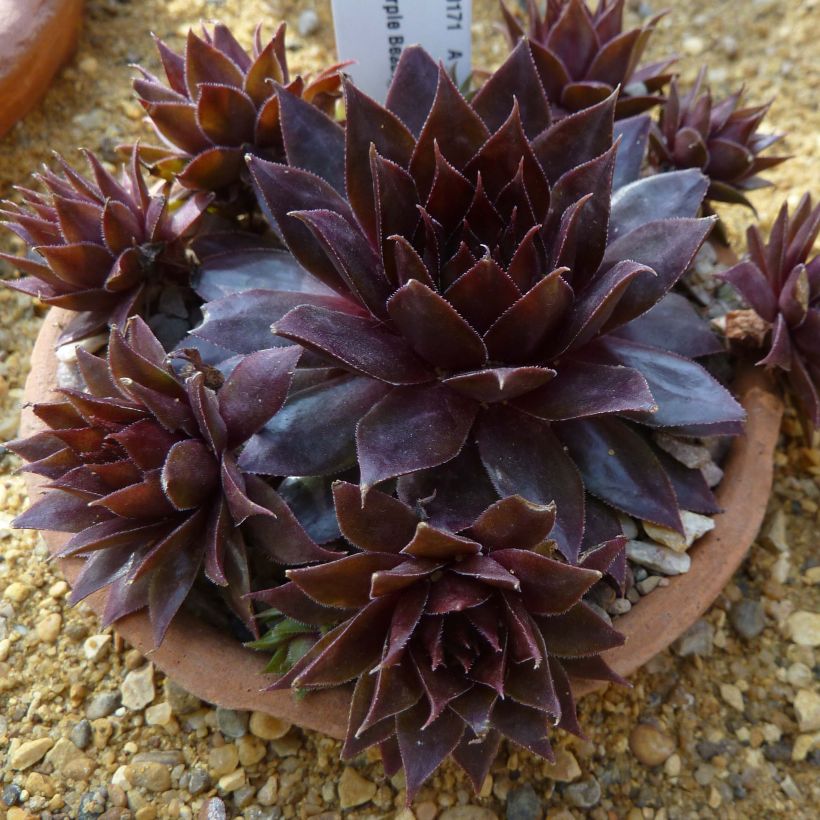

Flowering
Foliage
Plant habit
Botanical data
Sempervivum
Dark Beauty
Crassulaceae
Houseleek, Hen and Chicks
Cultivar or hybrid
Other Sempervivum - Houseleek
Planting and care
Sempervivum ‘Dark Beauty’ likes sunny exposures and perfectly drained, moist to very dry and poor, sandy or gravelly soils. Wet soils in winter are detrimental to its hardiness. You can plant it in spring or autumn in the ground or in a container, adding gravel or coarse sand to the planting medium. On the other hand, if you place it in a rock garden or on a low wall, give it just a little potting soil to help it to take root. Afterwards, it will fend for itself. You can also grow it in pots, watering it from time to time from spring to summer. Rather dry soil in winter is appreciated.
If you want to propagate it, simply cut a few young rosettes and replant them elsewhere, burying the roots just slightly.
Take care of it by ensuring it is not overwhelmed by taller plants, that it does not get covered in dead leaves or vegetation residues, and by optionally removing small faded inflorescences.
Planting period
Intended location
Care
-
, onOrder confirmed
Reply from on Promesse de fleurs
Ground cover perennials
Haven't found what you were looking for?
Hardiness is the lowest winter temperature a plant can endure without suffering serious damage or even dying. However, hardiness is affected by location (a sheltered area, such as a patio), protection (winter cover) and soil type (hardiness is improved by well-drained soil).

Photo Sharing Terms & Conditions
In order to encourage gardeners to interact and share their experiences, Promesse de fleurs offers various media enabling content to be uploaded onto its Site - in particular via the ‘Photo sharing’ module.
The User agrees to refrain from:
- Posting any content that is illegal, prejudicial, insulting, racist, inciteful to hatred, revisionist, contrary to public decency, that infringes on privacy or on the privacy rights of third parties, in particular the publicity rights of persons and goods, intellectual property rights, or the right to privacy.
- Submitting content on behalf of a third party;
- Impersonate the identity of a third party and/or publish any personal information about a third party;
In general, the User undertakes to refrain from any unethical behaviour.
All Content (in particular text, comments, files, images, photos, videos, creative works, etc.), which may be subject to property or intellectual property rights, image or other private rights, shall remain the property of the User, subject to the limited rights granted by the terms of the licence granted by Promesse de fleurs as stated below. Users are at liberty to publish or not to publish such Content on the Site, notably via the ‘Photo Sharing’ facility, and accept that this Content shall be made public and freely accessible, notably on the Internet.
Users further acknowledge, undertake to have ,and guarantee that they hold all necessary rights and permissions to publish such material on the Site, in particular with regard to the legislation in force pertaining to any privacy, property, intellectual property, image, or contractual rights, or rights of any other nature. By publishing such Content on the Site, Users acknowledge accepting full liability as publishers of the Content within the meaning of the law, and grant Promesse de fleurs, free of charge, an inclusive, worldwide licence for the said Content for the entire duration of its publication, including all reproduction, representation, up/downloading, displaying, performing, transmission, and storage rights.
Users also grant permission for their name to be linked to the Content and accept that this link may not always be made available.
By engaging in posting material, Users consent to their Content becoming automatically accessible on the Internet, in particular on other sites and/or blogs and/or web pages of the Promesse de fleurs site, including in particular social pages and the Promesse de fleurs catalogue.
Users may secure the removal of entrusted content free of charge by issuing a simple request via our contact form.
The flowering period indicated on our website applies to countries and regions located in USDA zone 8 (France, the United Kingdom, Ireland, the Netherlands, etc.)
It will vary according to where you live:
- In zones 9 to 10 (Italy, Spain, Greece, etc.), flowering will occur about 2 to 4 weeks earlier.
- In zones 6 to 7 (Germany, Poland, Slovenia, and lower mountainous regions), flowering will be delayed by 2 to 3 weeks.
- In zone 5 (Central Europe, Scandinavia), blooming will be delayed by 3 to 5 weeks.
In temperate climates, pruning of spring-flowering shrubs (forsythia, spireas, etc.) should be done just after flowering.
Pruning of summer-flowering shrubs (Indian Lilac, Perovskia, etc.) can be done in winter or spring.
In cold regions as well as with frost-sensitive plants, avoid pruning too early when severe frosts may still occur.
The planting period indicated on our website applies to countries and regions located in USDA zone 8 (France, United Kingdom, Ireland, Netherlands).
It will vary according to where you live:
- In Mediterranean zones (Marseille, Madrid, Milan, etc.), autumn and winter are the best planting periods.
- In continental zones (Strasbourg, Munich, Vienna, etc.), delay planting by 2 to 3 weeks in spring and bring it forward by 2 to 4 weeks in autumn.
- In mountainous regions (the Alps, Pyrenees, Carpathians, etc.), it is best to plant in late spring (May-June) or late summer (August-September).
The harvesting period indicated on our website applies to countries and regions in USDA zone 8 (France, England, Ireland, the Netherlands).
In colder areas (Scandinavia, Poland, Austria...) fruit and vegetable harvests are likely to be delayed by 3-4 weeks.
In warmer areas (Italy, Spain, Greece, etc.), harvesting will probably take place earlier, depending on weather conditions.
The sowing periods indicated on our website apply to countries and regions within USDA Zone 8 (France, UK, Ireland, Netherlands).
In colder areas (Scandinavia, Poland, Austria...), delay any outdoor sowing by 3-4 weeks, or sow under glass.
In warmer climes (Italy, Spain, Greece, etc.), bring outdoor sowing forward by a few weeks.

































